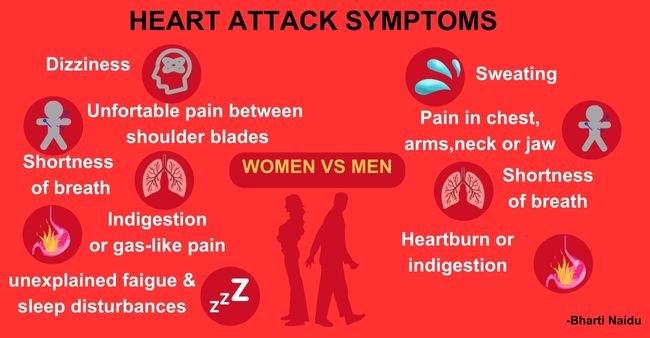If we say heart disease; for both women and men, coronary heart disease is the largest contributor to cardiovascular disease (CVD) morbidity and mortality. It can develop and present in dramatically different ways across both sexes because of:
A.Differences in anatomy of cardio vascular system
Compared to men, women have smaller hearts and narrower blood vessels. Females heart has a larger ejection fraction and beats at a faster rate but generates a smaller stroke values (blood volume sent to body with each heart beat)
B.Difference in the site of development of Cholesterol plaque
Men typically develop this plaque build-up in the largest arteries that supply blood to the heart. Women are more likely to develop this build-up in the heart’s smallest blood vessels, known as the microvasculature.
The following bad behaviours contribute to cardiovascular health
•Smoking
•Physical activity
•Sleep
Beside traditional risk factors, there are sex differences in the prevalence and effect of cardiovascular risk factors
Male related risk factors:
1.Decrease in level of testosterone (cardio protective) with age.
Female related risk factors:
1.Low high-density lipoprotein cholesterol as compared to men.
2.Women with diabetes have 2-to-4-fold greater risk for CVD compared to men.
3.Some autoimmune conditions, such as systemic lupus erythematosus and
4.Rheumatoid arthritis, which are more common in women than men, portend an increased risk of CVD due to chronic inflammation.
5.Pregnancy-related conditions
•Multiparty and lactation can be associated with insulin resistance and dyslipidaemiao Pregnancy-related disorders
•Women who give birth prematurely, have recurrent pregnancy losses, or
•Deliver small-for gestation age babies, hypertensive disorders of pregnancy, gestational diabetes, and peripartum cardiomyopathy may be at higher risk for future cardiovascular events
6.Polycystic ovary syndrome has higher risk of CVD due to insulin resistance, metabolic syndrome
7.Premature menopause (Low levels of estrogen) is associated with autonomic dysfunction, central adiposity, insulin resistance, and dyslipidaemia leading to increased risk of CAD, Heart Failure, Atrial fibrillation, and Ischemic stroke.
A common factor, stress and depression, affects women’s hearts are more than the men’s and both may trigger heart attack symptoms.
In particular, a condition known as “broken heart syndrome” or stress cardiomyopathy, can be brought on by stressful situations and cause severe, but usually temporary, heart muscle failure. This condition occurs most commonly in women after menopause.
All these risk factors mentioned above may influence the risk of coronary artery disease, valvular heart disease, arrhythmia’s, heart failure and ischemic stroke in development of pathophysiology with sex differences.
Symptoms of Heart diseases in men and women:
Men and women share many of the same symptoms for heart disease and heart attacks.
However, men are more likely to experience the well-known heart attack symptoms such as:
•Crushing chest pain
•Squeezing, discomfort, or fullness in the chest
•Pain in the arm, jaw, or back
•Shortness of breath
•Cold sweat
•Nausea
Women are less likely to experience crushing chest pain. They have a higher chance of having the following symptoms instead:
•Pain in the jaw, neck, or chest
•Feeling faint or lightheaded
•Squeezing on the upper back
•Fullness, pressure, or squeezing in the centre of the chest
As a result, women are more likely to ignore their cardiac symptoms as it is less obvious that they relate specifically to the heart. Also, women are less likely to complain their problems for the fear of disrupting the family members comfort and many times they report late. This also increases their risk of sudden fatal cardiovascular events.
But not everyone with heart disease has all (or even most of) these symptoms, especially not all women. Therefore, it is very important to mitigate risk factors, have healthy habits, get regular check-up and should not ignore vague symptoms.
“The Good News is that 90% of heart disease cases can be prevented with healthier lifestyle choices”
The author is a Vice Chairman & Chief – CTVS at BLK-Max Super Speciality Hospital























